An Exemplary Village in the north of Spain
Monday, October 30, 2017
The last Saturday morning, October-21, their Majesty the King Felipe VI and the Queen Letizia were in the small village of Poreñu (Celada, Villaviciosa, Asturias), to hand over to its neighbours the Prize to the "Exemplary Village of Asturias 2017".
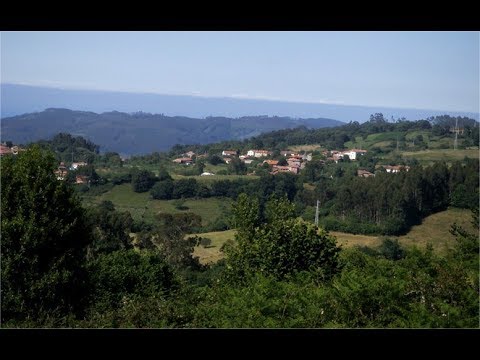
A view of Poreñu

Poreñu
In this way, the work done is recognised, to keep alive some ancestral traditions, of the locality, and an associative movement, to improve the living conditions of its neighbours.
The prize, awarded with 25,000 Euros, is awarded to the village, small village, population centre, landscape area or human group of the Principality of Asturias, which has notably highlighted in "the defense and conservation of its natural environment, of their historical, cultural or artistic heritage, or in the realization of communal works or other outstanding manifestations of solidarity".
Poreñu is formed by a nucleus of houses, surrounded by hórreos and paneras (a hórreo is a construction destined to store and to keep the foods away from the humidity and of the animals, to keep them in an optimal state for their consumption. A panera is an old rural building on pillars to store the cereal. It is similar to the hórreo, but it usually has more than four pegollos or pillars), being the agriculture and the cattle ranch the traditional activities of its little more than a hundred inhabitants.
 a 13 cm.jpg)
A traditional raised granary (Panera)
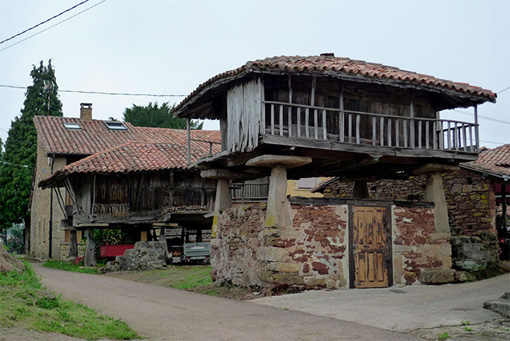
A traditional hórreo and a house
The inhabitants of Poreñu have kept alive some of the ancestral traditions of the locality, like the realization of sextaferias, to develop different improvements. With one of them, in the 50's of last century, the residents of Poreñu opened, with peaks and hazards, the box of the current road and also carried the water, to the public fountain, where they went to get water, for the houses, or was taken to drink the animals. Since 1972, Poreñu, through the community work, has had running water, in the houses, and, periodically, the unpaved roads, the road and common spaces have been repaired, in addition they have had improvements in the football field, the chapel, the bowling alley, the closure of the schoolyard and to carry out a complete rehabilitation of the cemetery. In order to give a boost to the coordination of efforts, to meet the needs of the village, in 1999 the Neighborhood Association "La Capilla" of Poreñu was created, whose first achievement was the recovery of the old schools and their transformation into a social and meeting for neighbours. It also organises cultural and special days, such as the Day of the Partner, the Festival of Candelaria, markets and fashion shows solidarity, a magüestu --magüestu or magosto is a traditional festival in some areas of northern Spain, such as Galicia, Cantabria and Asturias, each autumn-- and have recovered the Antroxu (Carnival in Asturias) and the Bonfire of San Juan (June 24).
In 2010, the Association proposed to recover all kinds of old utensils and objects, stored in hórreos and attics, which have been a permanent ethnographic sample. In addition, there are organised exhibitions of old photos, paintings, basketmaker´s and handicrafts made by the neighbours. The work of this neighbourhood association is complemented by two other associations: one, the Community of Water Users of Poreñu, which in its day achieved the improvement of the fountains of the village, the water supply and the construction of the deposit and currently has, among other improvements, the installation of a new fiberglass tank and a greater capacity, the provision of a chlorination system and the installation of water intakes, for the loading of tanks, which supply water to the meadows; and another, the Festival Commission, which is in charge of the festivities in honor of the Virgen del Pilar.
The collaborative work of the residents of Poreñu was rewarded, in 2010, with the prize "Aldea mas guapa" (“Most beautiful small village”) of the Friends of Landscape Association of Villaviciosa, "Cubera" (Prize to the Exemplary People of Asturias 1991), and, in 2011, with the Prize for the Best Associative Work of the Federation of Neighbourhood Associations of Villaviciosa (FAVVI). In 2013, the neighbours won the first prize in the carriage Contest, in the Villaviciosa Apple Festival and the prize for the year's associative trajectory of the FAVVI.
The neighbours of Poreñu are waiting for the Kings of Spain.
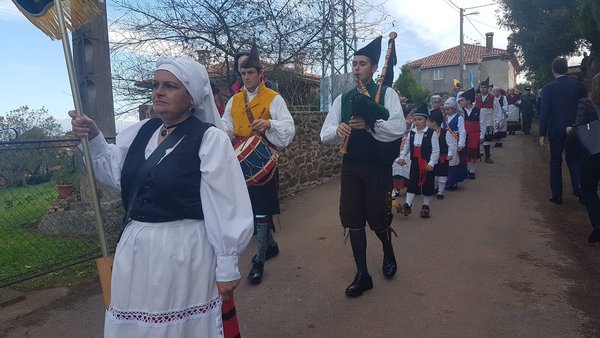
One bagpiper and the group of dance Aires de Asturias
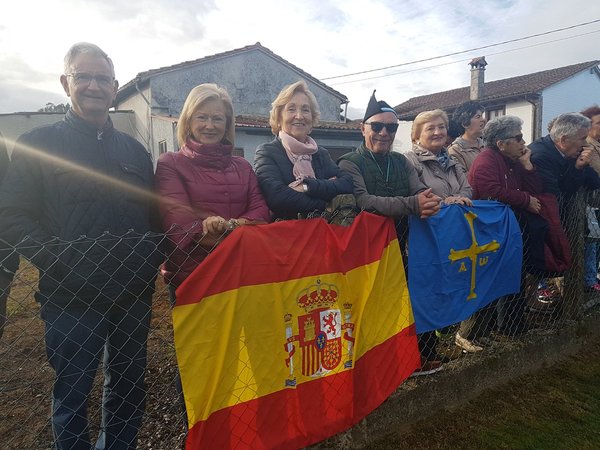
Some neighbours are proud of their two flags
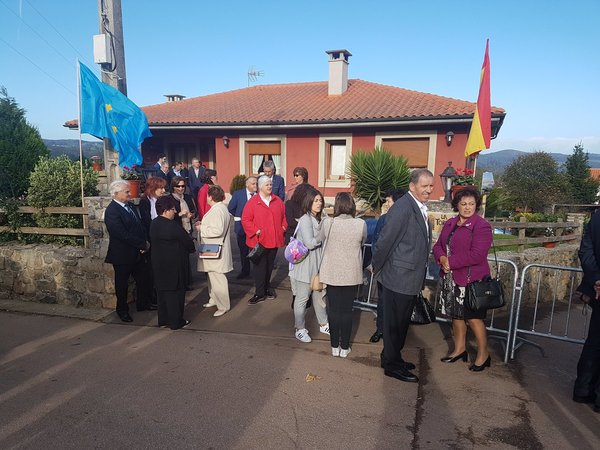
The authorities start to arrive
The President of the Foundation Princess of Asturias (Matías Rodríguez Inciarte) and the Mayor of Villaviciosa (Alejandro Vega) are waiting for the Kings:
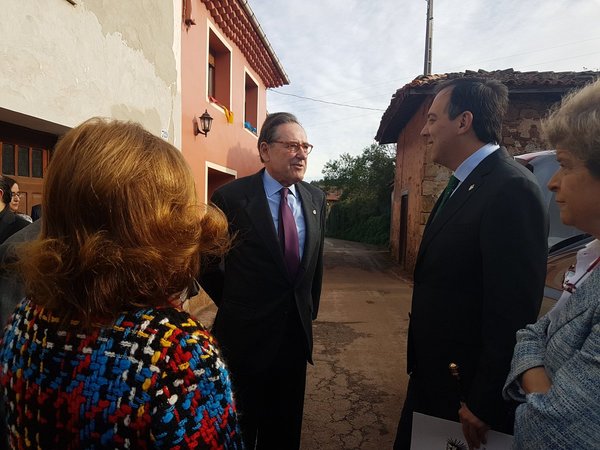
Matias Rodríguez Inciarte and Alejandro Vega
The Director of the Foundation (Elena Sanjurjo) is waiting for the Kings:

Elena Sanjurjo, on the right side
The President of the Autonomous Community of Asturias, Javier Fernández y Fernández, is arriving.
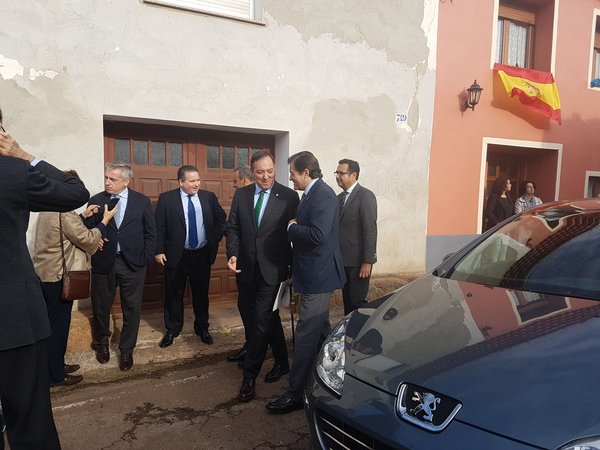
Javier Fernández with a light blue jacket on the right side
The Kings have just arrived to Poreñu:
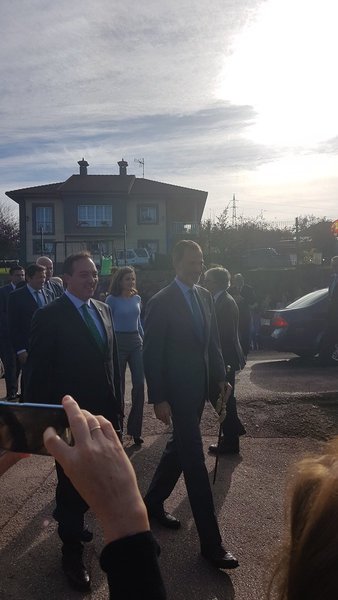
His Majesty the King Felipe VI and the Queen Letizia
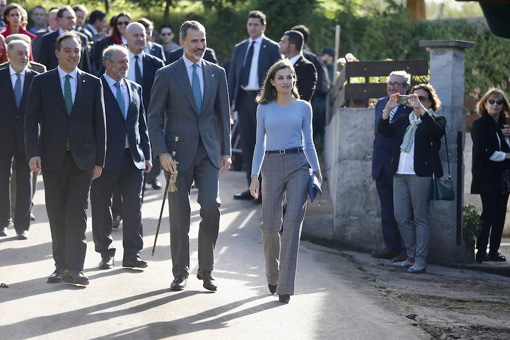

Their Majesty the Kings going down the village
.jpg)
The Kings seeing a raised granary (Hórreo)
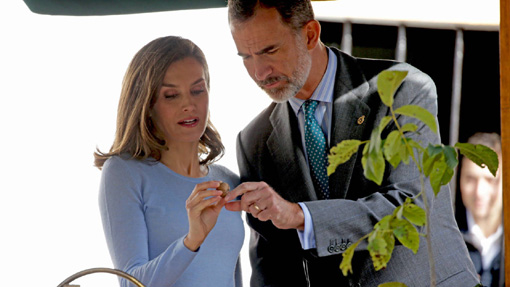
The Kings visiting a stand
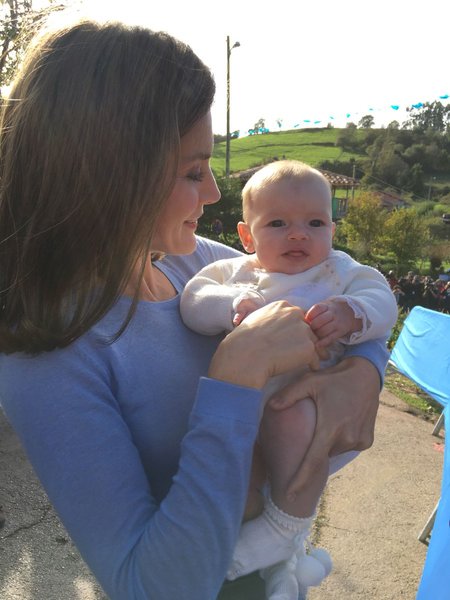
Mrs. Letizia with a baby
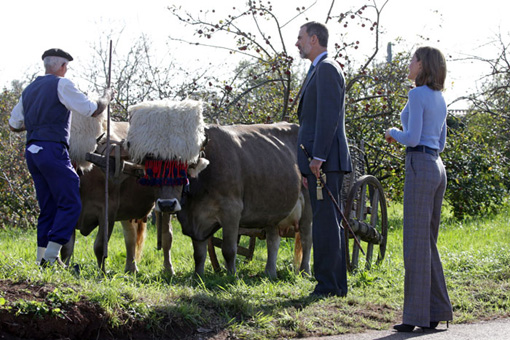
Some bagpipers are going to a meeting with the Kings:
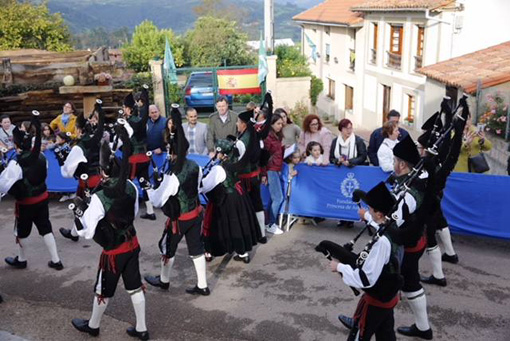
Bagpipers
The Kings with some children dancers:

The Kings are greeting to the group of adult dancers:
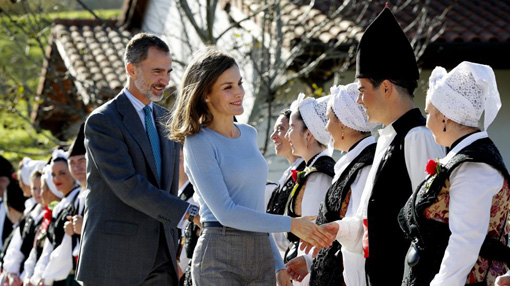
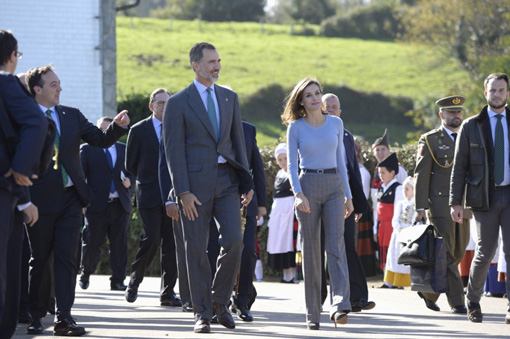
The Kings walking through the village
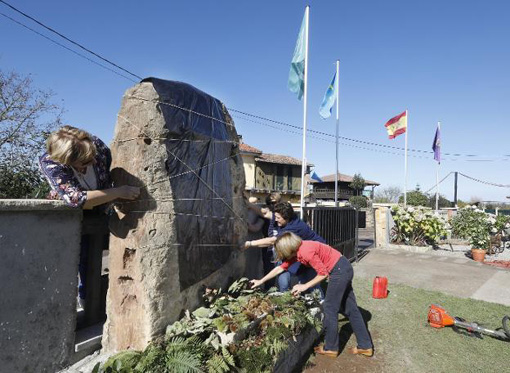
Some women preparing the monolith
The King has discovered the commemorative plaque of the Prize to the Exemplary Village:
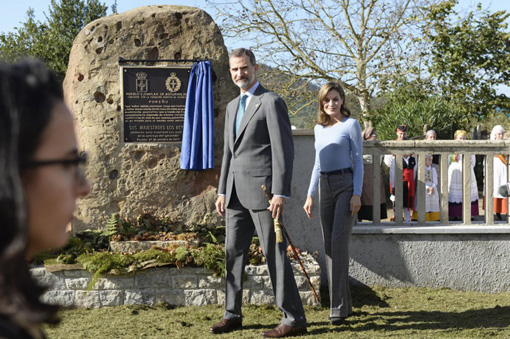
The Kings beside the monolith
The King Felipe VI gave a small speech:
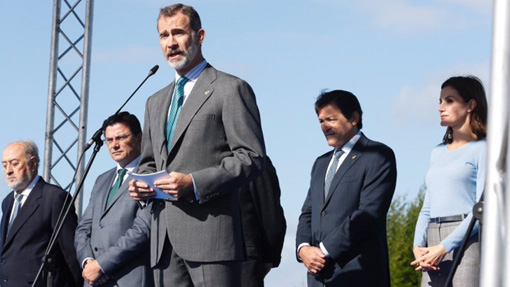
The King giving a speech
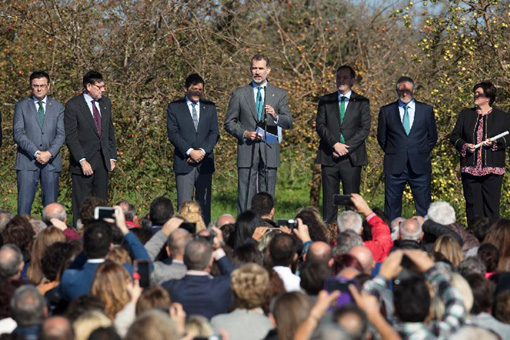
Many people listening to the King
This is a piece of the speech:
"The villages treasure very necessary values, for our society, that we must never lose: respect and knowledge of the environment and defense of the landscape; a concept of well-being, that put ahead the being of to have; a security, founded on the family and the neighbourhood; a way of understanding progress, as a syntony between tradition and sustainable development. Villages evoke an idea of what is authentic and sure, where doors are always open to hospitality, to welcome open, joyful and generous; they are places, where many people know and learn, for the first time, the values that guide a whole life; therefore, the villages affirm the soul and embellish the landscape of Asturias, highlighting the richness of its diversity; and this happens here, but also in many places in Spain. To celebrate this coexistence, these convictions and values, we have gathered in this beautiful place, in Poreñu, greeting the essential principles of neighbourhood, which you maintain, in an exemplary way, and with those who have built a model of solidarity and prosperity. In a few places, like in a small village, the foundation of life and coexistence in society can be perceived so clearly; the need to share, to unite, to realise a great common project. For this reason, Poreñu is, first of all and above all, community, a community that sinks its roots, at the earliest stage of History, and which makes the neighbourhood union as its main flag”.
Once more time, these neighbours have shown their good coexistence and the effort of them for the benefit of the village, in this case preparing the road, the streets and houses for the visit of the Kings.
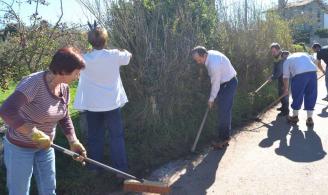
Some neighbours are cleaning a road
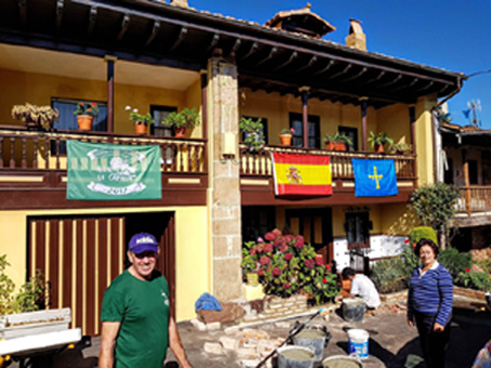
Some neighbours are decorating a house
The Kings wanted to join the neighbours of Poreñu in their effort:
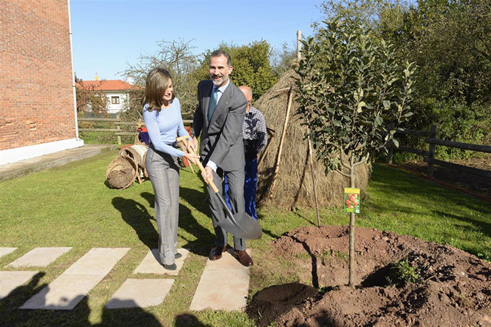
The Kings planting a tree
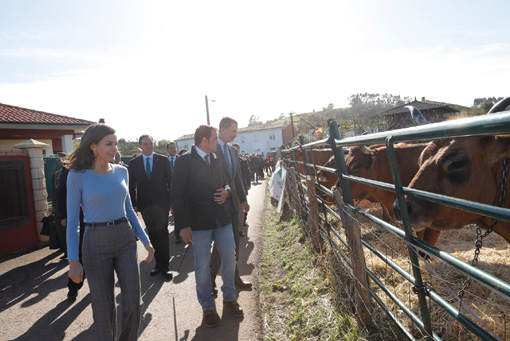
The Kings are visiting a stockbreeding
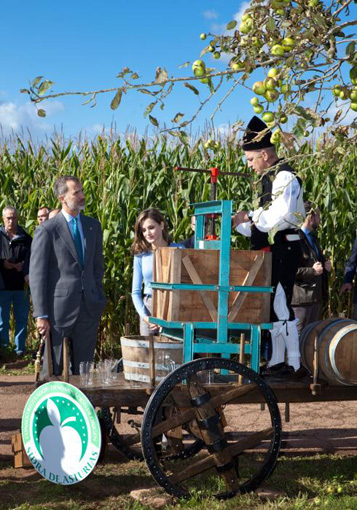
A small tank for cider
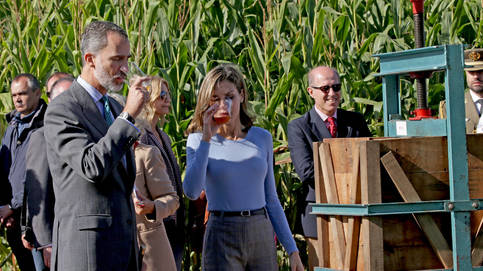
The Kings tasteing the cider
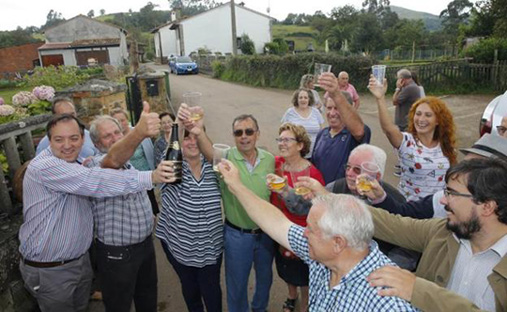
Some neighbours are celebrating the prize
Today I am still sad, because of all that has happened, in Catalonia, in the last weeks, because of the supporters of independence movement, because, with their radical minority, they wanted to dominate a legitimate and peaceful majority; with their hatred of Spain, they have lost the sense of coexistence, of the enormous value of common effort, to carry out the same land, as the neighbours of Poreñu have done, during so many years. And now this effort is rewarded with a very important Prize; and not only the Prize, but the pride of receiving it from His Majesty the King´s hands, the King of all Spaniards willing to live under the protection of the Law. Saturday 21 was a great day, a party, to celebrate that their effort, in community, has a reward, but living in freedom and fraternity --those are the true freedom and fraternity, not what the supporters of independence movement in Catalonia say--.It is a pity that people in Catalonia is divided. In Poreñu there are simple people, but great and united people, at the same time.
But, despite my sorrow, for the difficult times that we are living in Spain, I am comforted to know that we have a Head of State, so firm in his democratic convictions and a fraternal coexistence. We also have a moderate Central Government but, at the same time, firm in its decisions, regarding to the different Communities of Spain. And, of course, I am happy to know that we have a very clear separation of powers and that Justice is already acting, according to the circumstances. I am also happy to know that the European Union is on the side of common sense and the Law, which the Government of Spain is defending.
Long live united Spain!, Long live the King! and Long live united Europe!.
Until my next post, kind regards,
Luis.
Sponsored by Costaluz Lawyers.
Please click below:

 0
Like
Published at 8:03 AM Comments (0)
0
Like
Published at 8:03 AM Comments (0)
A very important archive for Spain
Thursday, October 19, 2017
Today I would like to talk to you of a very important place, for the History of Spain: Simancas.
The village of Simancas, 15 km from Valladolid, has a castle, which houses the second most important archive in Europe, after "the secrets of the Vatican". The so-called "General Archives of Simancas" (AGS) houses many documents from the History of Spain. This Archive was founded in 1540, making it the first official archive of the Crown of Castile. This Archive is one of the central axes, in the preservation and custody of documents, in Spain.
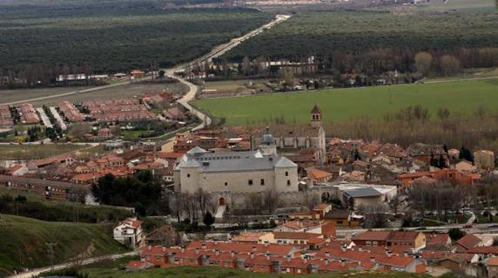
The village of Simancas
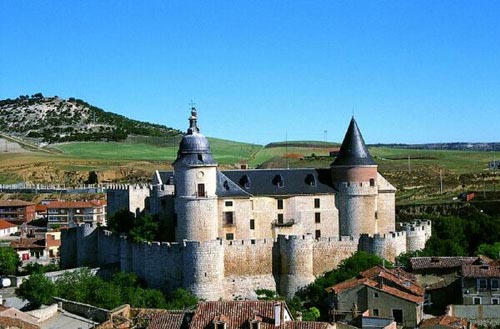
Archives of Simancas in the Castle
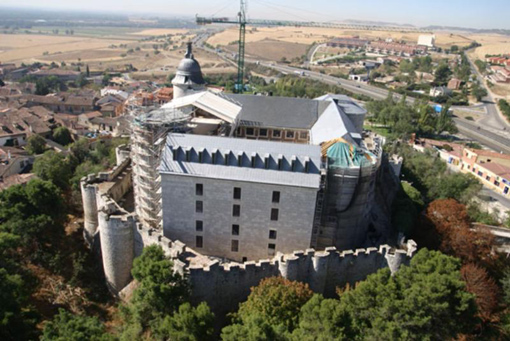
The back of the Castle
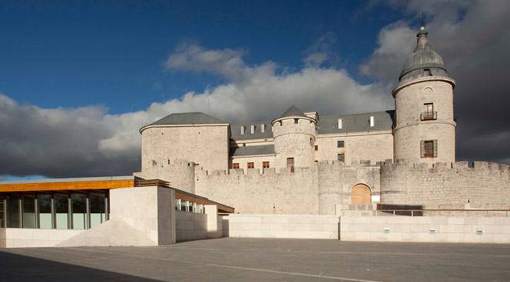
The front of the Castle
One of the main milestones occurred in 1588, when Felipe II granted the Instruction for the “Government of the Simancas Archives”, a key document to understand the management of this archive, as well as of others, in Spain.
On the other hand, the moments of strength or standoff of the Castilian monarchy were reflected in the form of arrival of documents or scarcity of resources. Also the damages, suffered during the War of the Spanish Independence, had important repercussions in what today is the institution.
At present, the AGS is a cultural institution, under the Ministry of Culture of Spain. In its interior, not only the preservation and cataloging of the documents, which it houses, are developed, but it is also a museum and a place, where you can investigate from its funds. These are very extensive and they are organized in almost thirty sections.
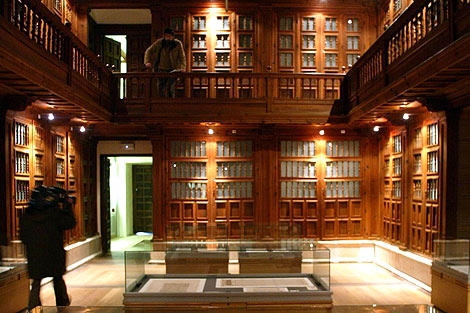
The Library
The Archive of Simancas (first official archive of the Crown of Castile) was created two centuries after the Archive of the Crown of Aragon.
A sixteenth-century State like the Castilian crown, which sought to join the new times of modernity, after the Middle Ages, needed to be surrounded by a perfectly articulated bureaucratic apparatus, and, in that sense, the Archive was crucial. From the outset raised, although without specifying the place, that it was located in a fortress, on the mere question of security, when it came to guarding the documents, produced by the State team.
From the first moment and until recent times, the AGS was not intended for cultural tasks, because it only responded to an express need for a place to keep the documents. In this line, a centralized archive is a point of support for the good government of a Monarch, since, in it, are physically the documents that legitimise his mandate.
Over time, the founding of the Simancas Archives has become a "landmark of Spanish archival history". In a certain sense, it was, since, after several attempts, the idea of establishing an official archive, in Castile, was concreted. In addition, it was given of a pioneering regulation, in its operation, almost five decades later (in 1588).
During the period of the Reconquest, the village of Simancas became importance as a border area. Subsequently, its strategic situation, between the kingdoms of Leon and Castile, gave it an important role, in the peninsular politics. After the conquest of Toledo and its territory, in 1085, the village lost its importance and, in the thirteenth century, it was only one of the many cities of Valladolid. However, it soon ceased to be part of the jurisdiction of Valladolid, since, in 1465, the King Henry IV of Castile rewarded the city of Simancas for remaining faithful to the royal cause, within the framework of the disputes between that king and Alfonso of Castile, with the privilege of nobility and chivalry, to all the inhabitants of the locality, as well as with the exemption of the Valladolid jurisdiction. Thus, between the XV and XVII centuries, were lived the "golden years" of Simancas, in which the establishment of the official archive of Castile was demarcated.
Until 1917, modern and contemporary historiography dated the fortress of Simancas at the time of the reconquest. However, in that year, Francisco Rodríguez Marín published a document in which, apart from other historical data, it is said that the fortress of Simancas had been taken by the Admiral Don Fadrique, in the time of Henry IV and later to be demolished and rebuilt by his son, the Admiral Don Alonso Enríquez. Thus, the date of construction of the present fortress can be located between the years 1467 and 1480.
The castle is so refurbished that it is almost impossible to know how it was originally. Since the Catholic Kings took possession of the fortress, in 1490, all kinds of modifications have been made, from the different heights built, by Felipe II, to the many reforms carried out, to adapt the building to the archive.
Since the founding of the Simancas Archive, all types of conditioning and enlargement works have been produced. The place was conceived to guard documents and not for research, so the ornamentation was not meant to decorate without more, but to remember that behind the institution was the regal power. For example, one of the doors of the AGS was decorated with the coat of arms of Felipe II, which reminded to any visitor who was before a regal institution.
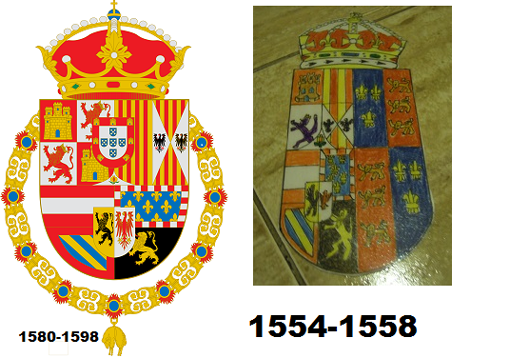
The Coat of arms of Felipe II
Finally, the castle was not a place designed to house an archive, which makes there are some drawbacks that have worried archivists throughout history. The most important of these is the risk of fires, a headache for any director of the archive. On the one hand, the fact that the archive shared space with a jail, increased the risk of books being reduced to ashes. In addition, being a fortress, the building was a prime objective, in the development of armed conflicts, which wreaked havoc, on the institution's funds, in conflicts such as the Spanish War of Independence, between 1808 and 1814.
In this sense, the critical voices, regarding location, have not been lacking throughout the XX and XXI centuries, since the proposals for the transfer of Simancas documents are frequent. One of the voices, that appear most strongly in this line, is that of González Amezúa, who proposes a complete transfer to the National Historical Archive of Madrid.
Well, I hope that you have liked to have known a very important piece of the Spanish History.
Until my next post, kind regards,
Luis.
Sponsored by Costaluz Lawyers.
Please click below:

 3
Like
Published at 10:38 AM Comments (3)
3
Like
Published at 10:38 AM Comments (3)
Another Spanish saying and proverb 76
Wednesday, October 11, 2017
Today I would like to talk to you of a very old and popular phrase, in Spain: "Tying the dogs with longaniza".
This is a cartoonish expression of wasteful overabundance, and has a very funny anecdotal origin. It is told that in the village of Candelario (province of Salamanca)..........,
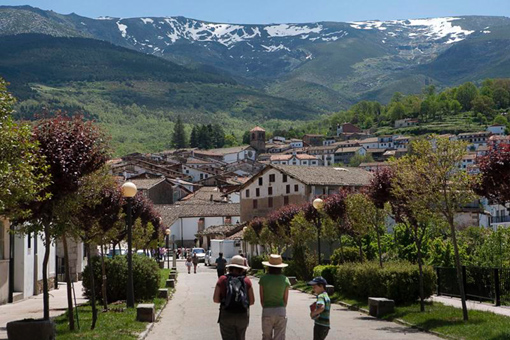
Candelario
............,at the beginning of the last century, there was a manufacturer of sausages --called "El Tio Rico, el choricero"(“The Rich Uncle, the man who makes chorizo”)--, in whose workshop, located in the basement of his house, many women worked. On one occasion, one of them was anxious to put a limit on the outrages of a little dog, who was walking around, and she could think of no better idea than to tie the animal, with a string of Italian sausage, to the leg of a chair.
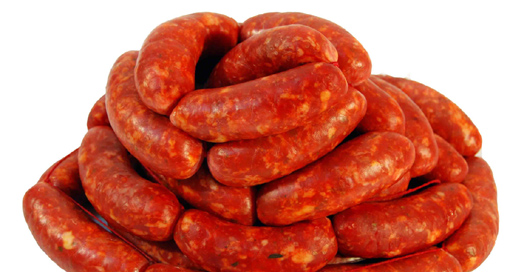
A string of italian sausage
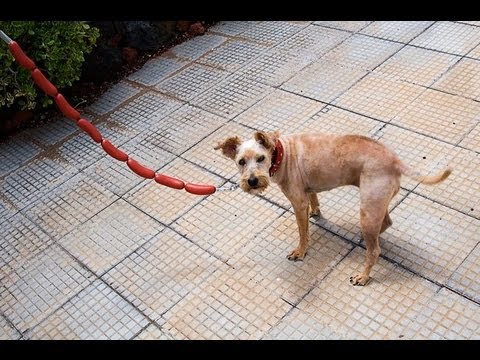
A dog tied with a string of italian sausage
A little while later, an arrapiezo (a man dressed in rags), the son of another woman operator, entered the workshop, and he barely saw, with stupefaction, the dog tied up in that way, and he stampeded out into the street, shouting that the dogs were tied with italian sausage. The news made a fortune and the phrase became proverbial.
They tell that the King Carlos IV was in the province of Avila, hunting wild boars. Walking after the prey, it was time to eat, far from the place where the food had been prepared. Charles IV, who was a fat and insatiable glutton, began to shout at his servants, calling them useless and saying that he was hungry and that they would soon find him something to eat.
And, by chance, a tall and thin man appeared on the road, with saddlebags on his shoulder –he was Tio Rico--.
- "Good man!, Do you have something to eat?" –The King asked him--
- "Chorizos, sir, I am going from Candelario, to sell them in the market of the city" –Tio Rico answered--.
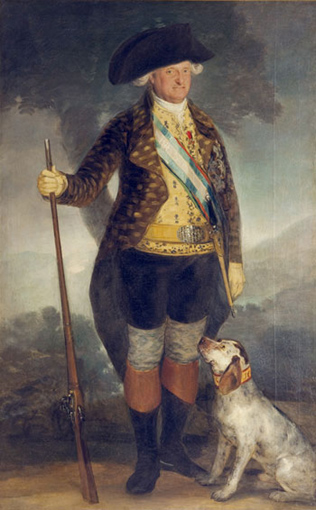
The spanish King Carlos IV
The king, who heard "chorizos", did not think twice.
- "Come here, I will buy your chorizos, if they are good".
- "Sir, the chorizos of Tio Rico, that is how they call me, are the best in the kingdom. Try it yourself". --And with a knife he cut some slices of the chorizo, that the king engulfed with anxiety and delight--.
In fact, it is said that he ate a whole string of chorizos himself, and some more those of his entourage, who also praised them. They were so satisfied that they not only paid well, but Tío Rico was named supplier of chorizos of the Royal House.
Whether or not this was so, the fact is that Tio Rico was painted by the painter Ramon Bayeu, and today he shows us his saddlebags and chorizos, from the walls of the El Prado and El Escorial Museum, which is no small honor for a manufacturer of chorizos.
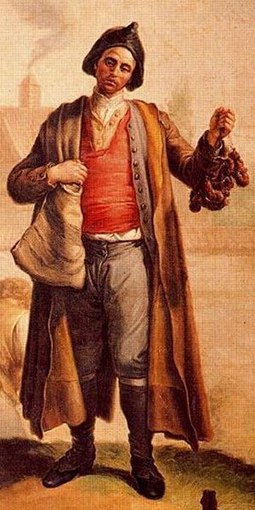
Tio Rico by Ramón Bayeu
Well, I hope that you will like this story.
Until my next post, kind regards,
Luis.
Sponsored by Costaluz Lawyers.
Please click below:

 0
Like
Published at 11:35 AM Comments (0)
0
Like
Published at 11:35 AM Comments (0)
Spanish researchers discover new therapy against metastasis in cancer
Thursday, October 5, 2017
Today, I would like to talk to you about an encouraging news: "CSIC researchers discover a new therapeutic target for treating metastasis in cancer".
Effectively, researchers at the Center for Biological Research have identified a new therapeutic target, in the metastatic tumor cells of colorectal cancer, melanoma and other tumors, such as the breast or pancreas, a finding that will help develop new treatments.
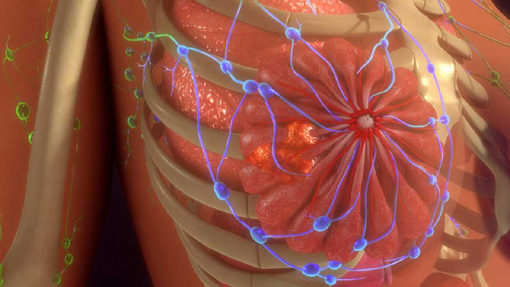
A new therapeutic target
The study, published in the journal Clinical Cancer Research, is an "important first step" to fight metastasis, which is responsible for more than 90% of cancer deaths, hence the effort of scientists to develop new treatments, that contribute to curb this high mortality.
The research began a decade ago, with the discovery of the role of cadherin 17 (cadherins are the major molecules of cell adhesion) in liver metastasis of colorectal cancer.
"We later discovered that it induced the activation of an essential mechanism for the adhesion and proliferation of tumor cells in the metastatic organ", explains Ignacio Casal, a CSIC researcher and lead author of the work. "That same mechanism, he adds, is present in other tumors such as melanoma and breast cancer".
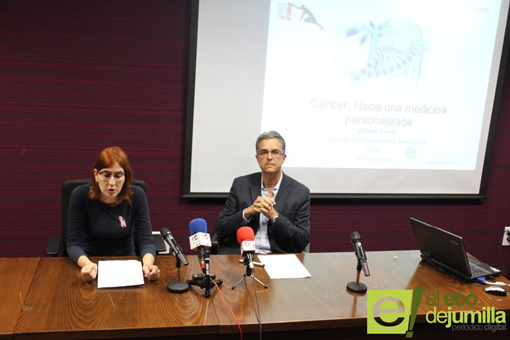
Jose Ignacio Casal
The study has shown how monoclonal antibodies, produced in mice, are effective in preventing metastatic colonization, in the liver and lung.
"The RGD peptide of cadherin 17 exhibits a therapeutic activity and protects mice from dying from the spread of both hepatic and pulmonary metastasis", Casal notes.
This advance has important sanitary implications, since at present surgical techniques are the only effective ones, for the control of metastasis in cancer.
The monoclonal antibodies, a patent of the CSIC, are developed in collaboration with the biotech company Protein Alternatives S.L., which has a license from the Council for the use of those antibodies. The next step, in the research, will be to verify the effectiveness of this therapeutic target in humans, since until now the experiments have only been performed in animal models.
Well, I hope that this possibility that the therapeutic target is effective in humans, is a reality very soon.
Also I hope that you will like this news, such as I do.
Until my next post, kind regards,
Luis.
Sponsored by Costaluz Lawyers.
Please click below:

 0
Like
Published at 11:02 PM Comments (0)
0
Like
Published at 11:02 PM Comments (0)
The Spanish Water Dog in Southern Spain
Monday, October 2, 2017
On September 9 and 10, 2017, the 15th Conference of the Spanish Water Dog was held, in Grazalema.
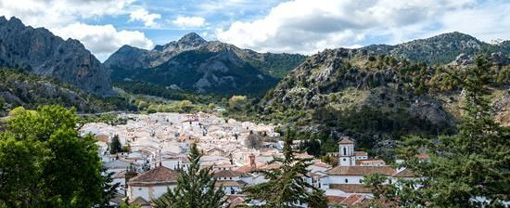
Grazalema, Cádiz, South of Spain
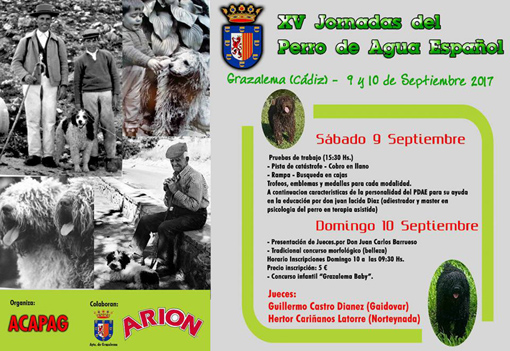
Poster 15th Conference of the Spanish Water Dog in Grazalema
Those days will began, at 15.30 on Saturday 9 September, in the Plaza del Asomadero, where they made tests of work of the Spanish water dog, consisting of a catastrophic track, collection in plain, ramp and search boxes, valued the tests by Mr Antonio Manchado Nieto, by time and correction.
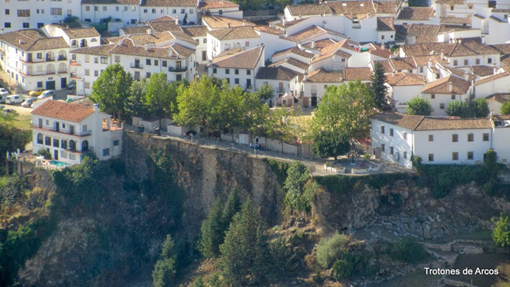
Lookout of the Plaza del Asomadero
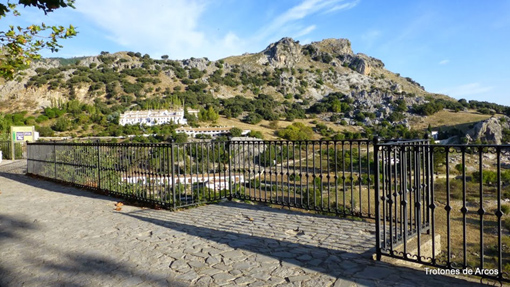
Balcony of the lookout and the National Parador on background
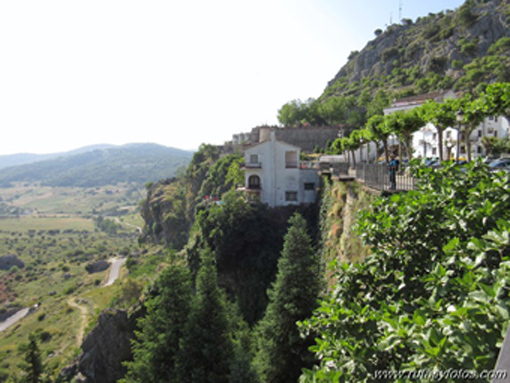
Asomadero (Viewing point)
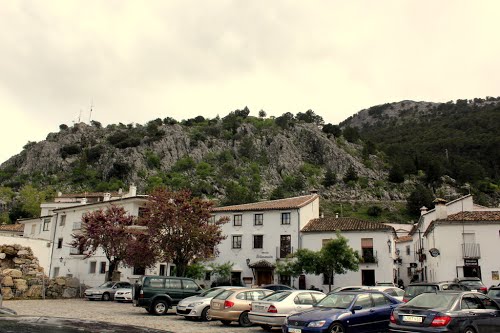
Plaza del Asomadero and the great restaurant, “Simancón”
I have not been able to find pictures of most of the tests that dogs have done this year; but I can show you the picture of a dog, working on the remains of a catastrophe. I can also show you the picture of a dog, looking in a box --a test done by the dogs, in 2013, and they have also done it this year, 2017--.

A water dog working on a catastrophe
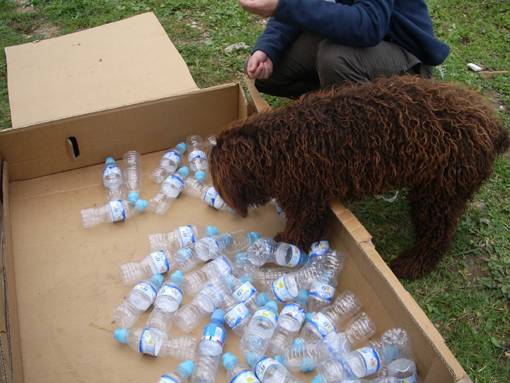
A water dog searching in a box
They received trophy-emblem the three first classified and medal to the best one.
After the tests, Mr Juan Lacida Diaz (Trainer and master in assisted therapy with dogs) took part with theory and practice.
The Conference have also had room reserved for children, with the celebration on Sunday September 10 of the "Grazalema Baby Spanish Water Dog", a canine beauty contest for children under 14 years, with gifts and diploma for each participant. Children, who are enthusiastic about the breed, might participate, even if they do not have a dog in ownership, since the organization facilitated it.
This was the poster in 2013:

That year, the 11th Conference of the Spanish Water Dog was held on September 14 and 15. Everything began on Saturday the 14th, in the meeting room, with a presentation on different visions of the breed of the Spanish Water Dog.
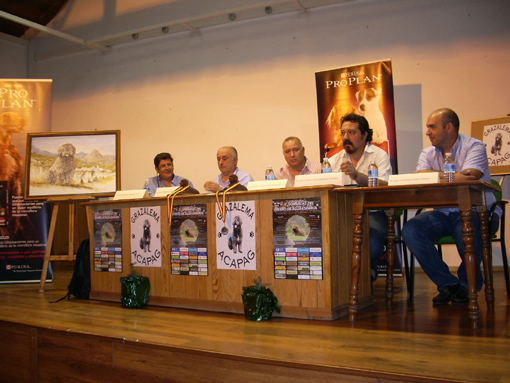
The presentation
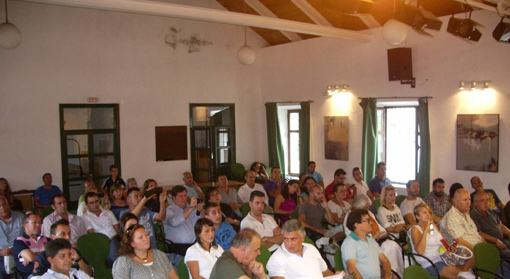
The social gathering
Then, the gatherings continued in the different places, where they met for dinner. At the dinner, the Club of Friends of the Water Dog of Grazalema (ACAPAG ), together with some friends else, surprised their President, Guillermo Castro, by giving him a plaque, in recognition of all these years of dedication, commitment and involvement, with both the water dog and the village of Grazalema. this presentation was made in the intimacy of the dinner, because of the humble character of Guillermo.
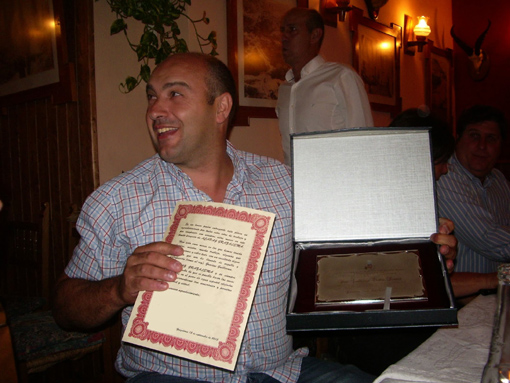
Guillermo Castro and his plaque
On Sunday, for the first time, the tent was installed in the Plaza del Asomadero, and it was a success, because there was more room than other years.
 a 18 cm.jpg)
The tent on the Plaza del Asomadero
At the registration table,146 dogs were registered, in the morning.
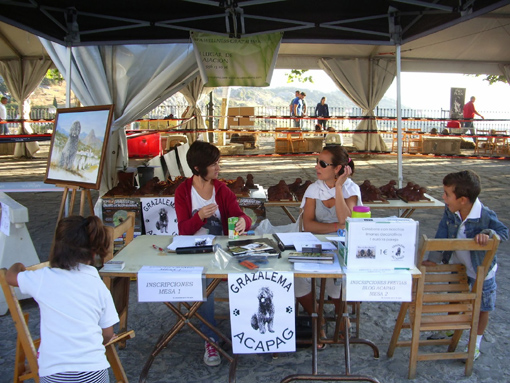
The registration table
The tests begin:
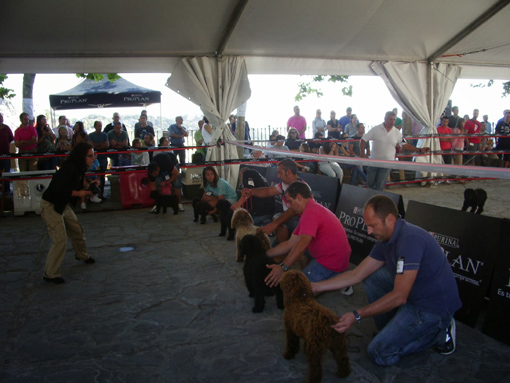
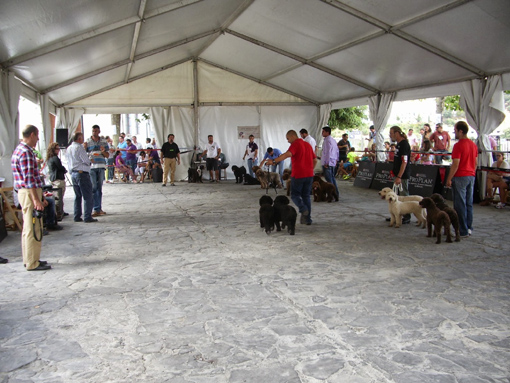
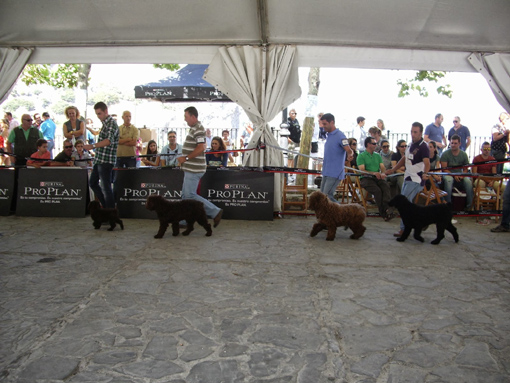
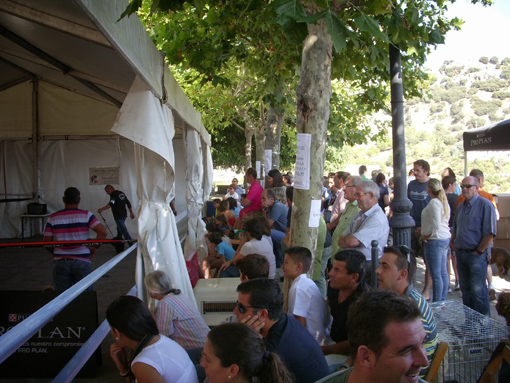
Some people seeing a test
These were the trophies, like the last year, when they were a success:
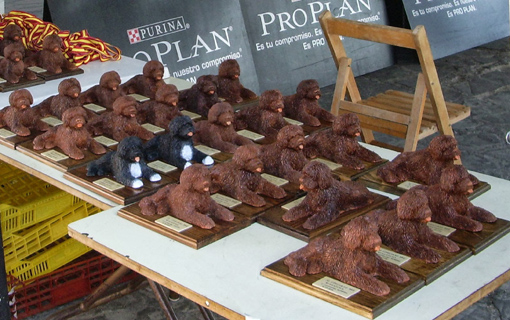
The trophies
Another trophy was this painting, by the local artist, Paco Gil, for the Absolute Bis:
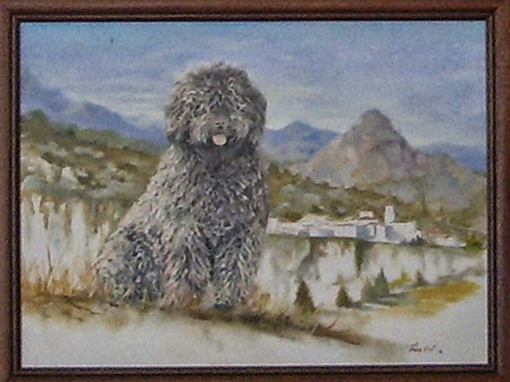
The painting by Paco Gil
A commemorative medal was also given to the top three dogs, in each category.
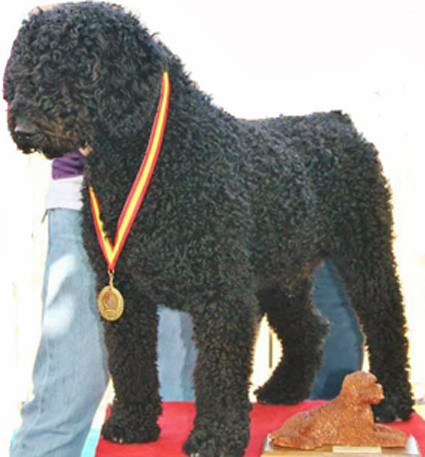
The first medal Male category: Hermoso del Endrinal
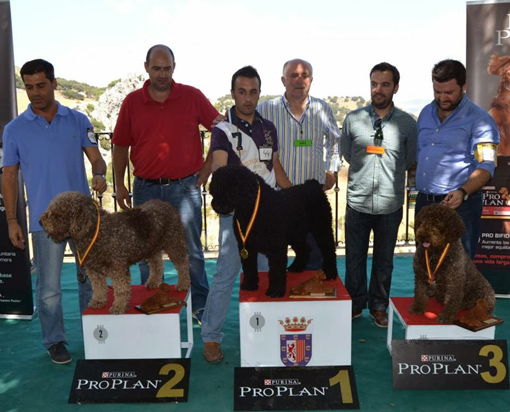
Open Male category
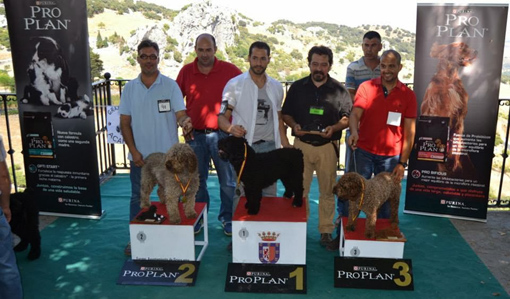
Open Female category
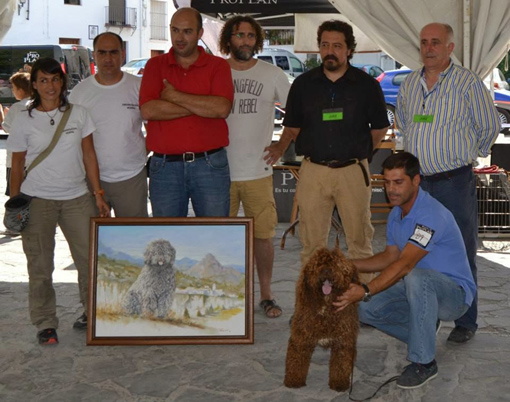
Absolute Bis: Turbo del Rabadan
On the other hand, once again they had the children's contest, with many children presenting their dogs and they (the organizers) were able to give a commemorative medal, to each participating child.
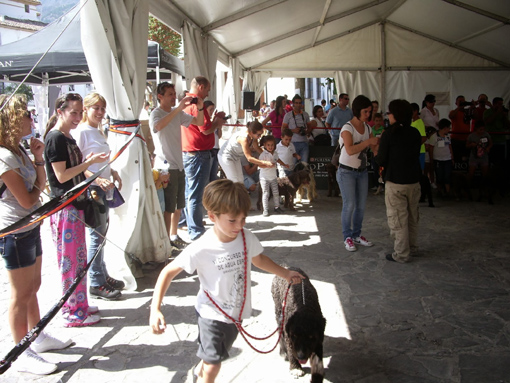
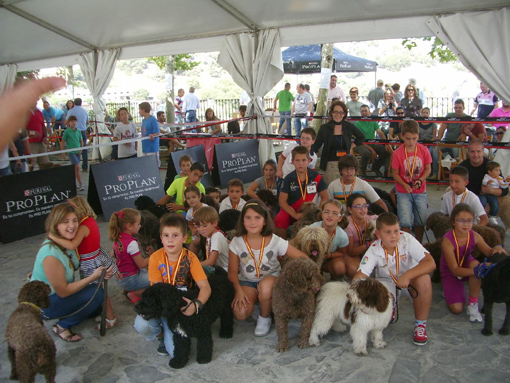
Parallel to the contest, they had two exhibitions of photographs, one on the eleven years of this Conference and another on the activities, carried out by ACAPAG, in the last year.
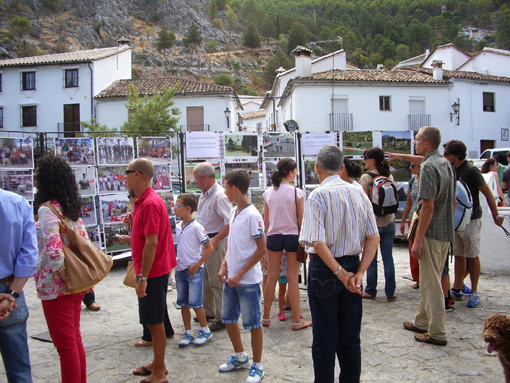
Also, just like the last year, they installed a children's workshop, that was very busy and, in the end, there were prizes and gifts for the children, who participated. There, the children could colour, paint T-shirts, do puzzles, know the signs of dogs, know how to approach a dog, interpret their language and practice training in obedience, with misha, that carried its backpack full of candy.
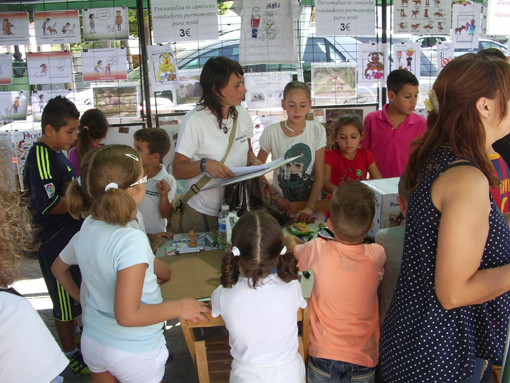
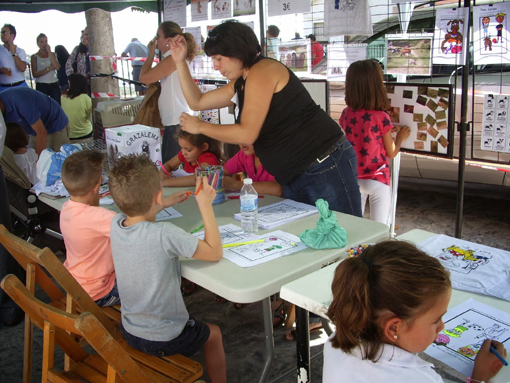
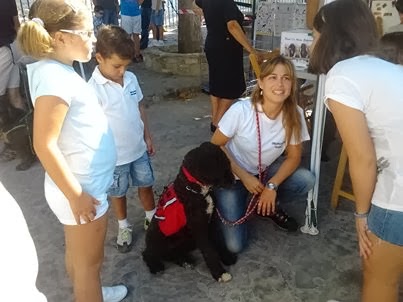
Misha with some children
Well, I hope that you have liked this article and hope that you can go to Grazalema the next year, during the 16th Conference of the Spanish Water Dog.
Until my next post, kind regards,
Luis.
Sponsored by Costaluz Lawyers.
Please click below:

 0
Like
Published at 11:41 AM Comments (2)
0
Like
Published at 11:41 AM Comments (2)
Spam post or Abuse? Please let us know
|
|